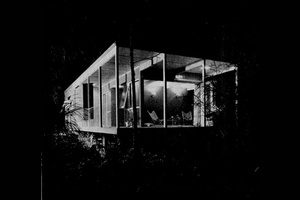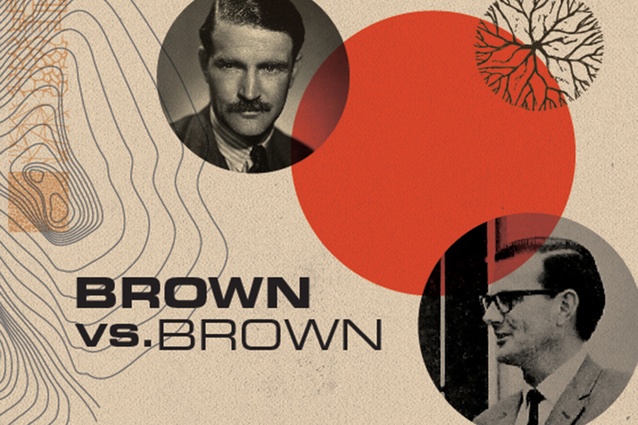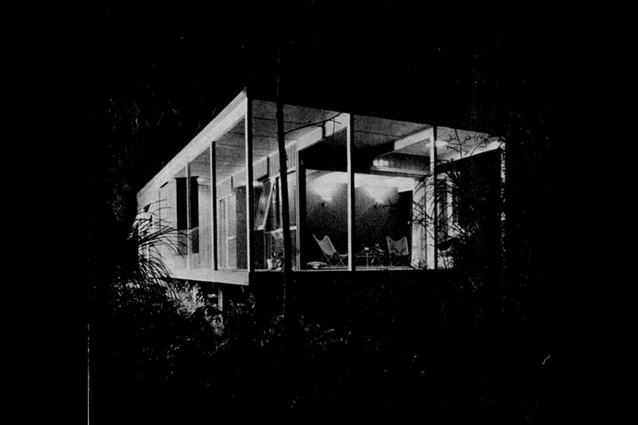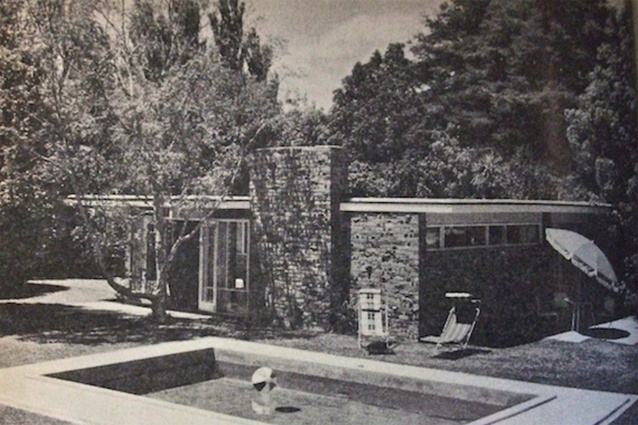Film: Brown vs. Brown
It looks great and the premise of the film is promising. A son seeks understanding of his long-dead architect father, about whom there is some mystery: a changed name, a second family.

We have, of course, come across something like this scenario before, in the film My Architect: A Son’s Journey, made 20 years ago by Nathaniel Kahn, about his father Louis Kahn. But that film is heart wrenching, dwelling from the very start on Kahn’s death and his son’s sense of grief and grievance over his father’s personal failings vis-à-vis his significance as an architect.
By comparison, Brown vs. Brown is (almost) entirely upbeat, its positive tone underwritten by the Dave Brubeck soundtrack of happy sixties jazz. Simon Mark-Brown’s film, until the shock delivered at its end, touches on the personal matters of Peter Mark-Brown’s life rather lightly.
There are several slow-motion sequences of him (an actor?) on a golf course – I guess the message being that architecture was not his life. Rather than dwelling on the personal, Brown vs. Brown examines Peter Mark-Brown’s work in relation to the New Zealand architectural culture of the 1950s to the 1970s.
The tone is conversational, with many — many, many — expert talking heads setting out the privilege given to New Zealand’s ‘regionalist school’ of architecture led by Vernon Brown and the Group. Architects like Mark-Brown have — by comparison — suffered neglect, identified as internationalists for their disdain for the Group’s autochthonous, shed aesthetic, and for looking to a wider range of influences.
Brown vs. Brown concentrates in particular on the impact of Richard Neutra (Simon Mark- Brown shows Neutra’s son Ray photos of their dads’ work in which the Mark-Brown projects are barely distinct only by their diminished scale). The historiographic neglect that Mark-Brown and Fairhead and other like-minded architects and practices — Rigby Mullan, Vladimir Cacala, Tibor Donner, Ken Albert, Adams Dodd — have suffered is despite the considerable success they enjoyed. The film offers plenty of evidence of their accomplishments.

None of this will be new to New Zealand’s architectural historians and its more thoughtful, history-inclined practitioners. The binary of the Group versus the rest has been both bane and bread and butter of architectural history writing in New Zealand since David Mitchell and Gillian Chaplin’s The Elegant Shed of 1984.
Even the truth-telling of Julia Gatley’s exemplary Group Architects (2010) seems to have made little difference. Brown vs. Brown does not escape a major fault both of the pro-Group advocates and of the supporters of the ‘internationalist’ rivals in architectural debate — the conflation of the story of architecture in Auckland with that of New Zealand per se. There is a moment in Brown vs. Brown when Douglas Lloyd Jenkins identifies a third path in New Zealand architecture — the brutalists: Warren, McCoy and Toomath, none of them Aucklanders — but the film glides past the point in less than a minute. The shake-up that Ian Athfield and Roger Walker offered in the 1970s does not warrant a mention at all.

And yet, I think this film may do something that architectural history writing hasn’t done: bring discussion of architecture in New Zealand to a non-expert audience. Even Mitchell’s Elegant Shed television series didn’t do this, stuck as it was in the limbo of late-night ‘arts’ programming.
But, should it happen, would such discussion work along the lines proffered by the talking heads tasked with explanation in Brown vs. Brown? Will the rivalry between the regionalists and internationalists catch the attention of non-architects?
In the film, the experts are supplemented on the one hand by people who knew Mark-Brown through their working with him (Alan Fairhead divulges that Mark-Brown told him to wear starched collars) and, on the other, by the inhabitants of both ‘regionalist’ and ‘internationalist’ houses. Testimony of the occupants — many of very long standing — is invariably positive; interior camera shots of both ‘regionalist’ and ‘internationalist’ species reveal similarly full lives, richly lived, the furniture, artworks, books and other paraphernalia of which erase the differences between the houses through sheer profusion.
Similarly, panning shots and overhead drone images of a range of Auckland’s lush suburban landscapes, replete with harbour and bush views, reveal that the settings both for the Group’s houses and for Mark-Brown and Fairhead’s have developed a remarkable convergence. Quite what this could mean I do not know, but you have to wonder whether or not the differences that have mattered to architects matter much to other people at all.
The film will be playing in cinemas throughout New Zealand from Tuesday 12 September:
Matakana (QA 12 Sept)
Auckland – Rialto, Bridgeway, Capitol (QAs Sept 13, 14 and 16)
Cambridge Tivoli
Papamoa Tivoli
Napier Globe Theatrette
New Plymouth Govett Brewster
Wellington Cuba Street Lighthouse
Petone Lighthouse
Napier State
Wanaka Rubys
Geraldine
Christchurch Alice Cinema
Dunedin Rialto












